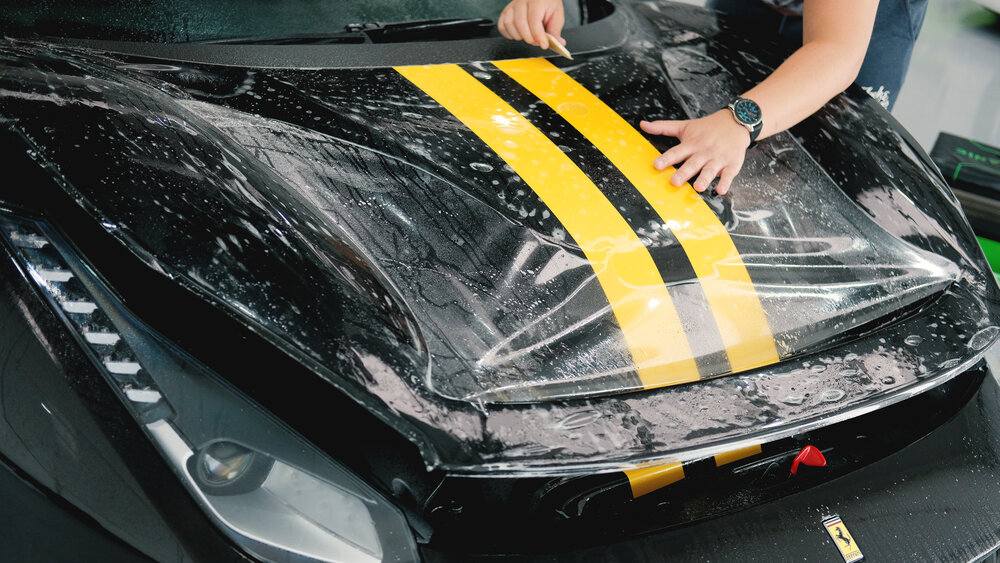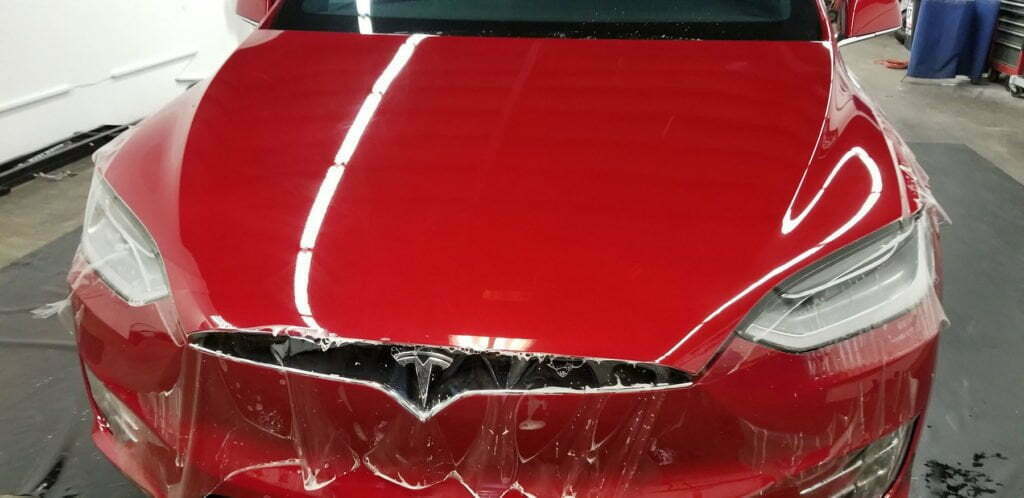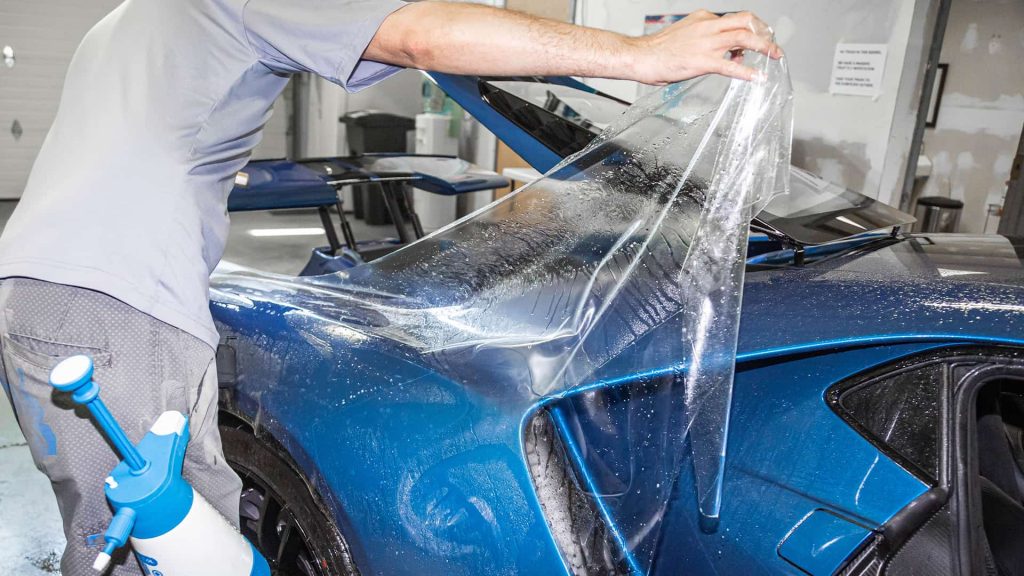The absolute best way to protect your car paint is PPF (Paint Protection Film).
Car Paint Protection
Paint Protection Film is a thin plastic coating that is applied over the entire surface of a vehicle’s paint to provide protection against the damaging effects of ultraviolet rays, heat, and moisture. The plastic is designed to be flexible enough to protect while remaining invisible.

The film comes in a basic two-part formulation comprised of a clear base that is water-resistant, and an anti-glare topcoat.
XPEL Paint Protection Films
Protectors from XPEL Paint Protection films are actually made up of two components; the base protector, and the topcoat protector. The base protector is organic polyester. This lining is widely used to create paint finishes for both interior and exterior application, including carpeting, vinyl, and plastic wrap. The styling of the base protector is based on material selection, color selection, texture selection, and other factors. Base protection comes in matte, glossy, and clear coats.
Paint Protection Film is designed to protect against the elements, and both priming and maintenance tasks. Using a primer application can help shrink the size of defects in the paint. Priming or painting provides a barrier where defects can be held, reducing potential damage from contamination. Paint Protection Film provides a semi-transparent film over the primer to provide added coverage to bumpers, door handles, and other vehicles whose primer has defects. This paper-thin coating is applied using either a can, or using a spray booth.
Once the primer is applied, the film comes in the multi-coat variety. The primer, topcoat, and paint protection film are virtually water repellent, so they should be left on the surface for a minimum of 4–5 days before normal car washes or washes with soap.
The Anti-Glare Topcoat listed for this product comes in a spray can, and it is compatible with all major paint applications. The spray can is thicker than most standard automotive spray cans. Since the entire surface of the vehicle is covered in a base coating, and the topcoat underlying this is opaque, the spray topcoat also provides additional coverage. However, roughly a third of the surface is coated with clear coat, so the surface must be primed to create a barrier for imperfections and contamination.
Removing the application from its protective casing will reveal oozing clearcoat. This clearcoat is water repellent, but can be cleaned off of the vehicle using ordinary soap and water with a minimum alcohol content of 10%. This process is the same as using a regular car wash. This topcoat is reasonably thick, and will require additional protection if the vehicle is left out in the sun for an extended period of time.
Unless there is an obvious defect on the surface caused by major modification, the procedure for maintaining the topcoat is the same as cleaning it with a conventional car wash. The topcoat will need to be periodically cleaned with alcohol or a setup using a nozzle to collect the excess, or bacteria.
Both the spray can and the priming and painting processes use silicone sealants.
This type of film is often used by dealers, before their new-painted vehicles arrive at their showroom.
When a car’s paint is pitted, scratched, or badly dented, the protection film can help prevent further damage.
Paint Protection films help reduce the intensity of the sun’s harmful rays, preventing damage to headlights, taillights, and rims, as well as reducing the amount of pigment in paint that is absorbed by UV lights.
Protection films also help prevent water and dirt from getting inside clear coat paints, as well as prevent the absorption of moisture when paints are humid.
Because protection films don’t smudge or fade, they offer several advantages over other car protective coatings. These include greater protection while driving in rainy or icy conditions; easier maintenance of your car’s paint; and reduced oil and battery consumption.
By applying a paint protection film over broken glass, you protect your car from exterior damage that could otherwise occur if the glass shattered and allowed pebbles and larger objects to fall into your car.
A paint protection film covers glass that is clear of damage. When you remove the film, you’re exposing the clear coat underneath. If the glass is scratched, you can reinstall the film and protect the clear coat as usual.
Even though color auto paints using this type of plastic often come in shades and light colors, most color protected paint works the same way. This makes applying the film much easier than trying to paint inside a clear coat or prep it by spraying paint by hand.
If your looking for professional PPF installers in Orlando, Florida. Give us a call (407) 801-1715




